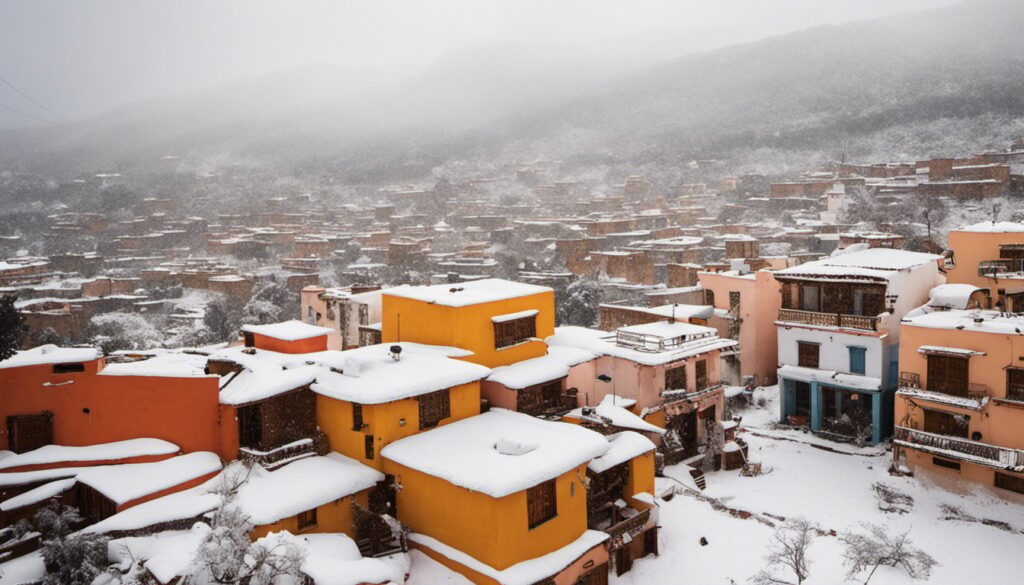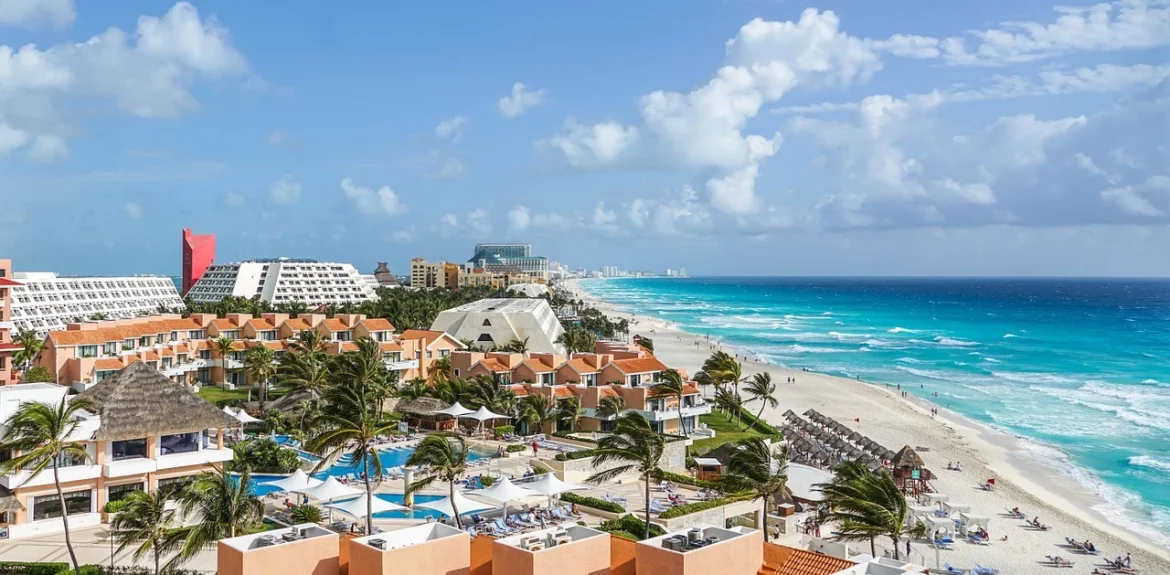A previous article on our blog about Mexico discussed the beautiful Mexican weather girls. This article will focus on the actual weather in Mexico.
So what kind of weather does Mexico have? It’s actually quite a varied climate, with different regions experiencing different types of weather. In some parts of Mexico, it’s hot and humid all year long, while other areas experience cooler temperatures. If you’re planning on traveling to Mexico, it’s important to be aware of the expected weather conditions in your destination. Here’s a breakdown of the different types of weather you can expect in Mexico.

Table of Contents
Weather in Mexico
Mexico is a land of diversity when it comes to weather. You can find everything from snow-capped mountains in the north to tropical beaches in the south. And, of course, there’s the iconic desert landscape in between. No matter what time of year you visit Mexico, there’s sure to be an interesting weather pattern to enjoy. In the north, the climate is mostly temperate, with cooler temperatures in the winter and warm summers. However, you can also find areas of rainforest and high mountain peaks. The center of the country is dominated by the arid desert landscape. But even here, you’ll find variation, with some areas receiving more rainfall than others. And, of course, the further south you go, the more tropical the climate becomes. So whether you’re looking for sunny beaches or cool mountain air, you’ll find it in Mexico.
We also have an article on the weather in Mexico City.
Does Mexico Get Cold?
Contrary to popular belief, Mexico is not a tropical paradise where it’s always warm and sunny. In fact, depending on where you go in Mexico, the climate can be quite diverse. For example, in the northern state of Sonora, temperatures can drop below freezing during the winter months. And in the highlands of central Mexico, it’s not uncommon for snow to fall. So whether you’re looking to escape the cold weather or enjoy a winter wonderland, Mexico has something to offer everyone.
What is the Weather Like in Mexico Each Season?
Mexico is a land of extremes when it comes to weather. The temperatures can range from freezing in the north to hot and humid in the south. However, there are some general trends that can be observed throughout the country.
In the winter, the average temperature is around 50 degrees Fahrenheit. This is cool enough to need a light jacket in most parts of the country, but the days are still sunny and pleasant.
The spring brings warmer weather, with temperatures rising into the 70s. April and May are usually the driest months of the year, making them ideal for exploring Mexico’s many archaeological sites.
The summer is when the weather really heats up, with average temperatures in the 80s and 90s. This is also the rainy season in most parts of Mexico, so be sure to pack your raincoat if you’re planning a summer trip.
The autumn months bring cooler weather once again, as well as some of Mexico’s most spectacular festivals. With its varied climate, Mexico is a country that can be enjoyed year-round.
Does Mexico Get Snow?

Does Mexico get snow? The answer might surprise you! Although Mexico is located in a tropical region, there are actually a few places in the country where snowfall is not uncommon. The highest peak in North America, Pico de Orizaba, is located in Mexico, and the mountain often receives a dusting of snow each year. In addition, the Sierra Nevada Mountains, which rise to over 12,000 feet, also experience occasional snowfall. So, while it’s true that Mexico generally doesn’t get much snow, there are definitely exceptions to the rule! For more rain you can check out this blog post: how much rain does Mexico City get a year?
Is Mexico Hot or Cold?

Mexico is a country with a diverse climate that varies depending on the region. Generally, Mexico experiences hot weather throughout the year due to its tropical climate. Daytime temperatures can range from 19/20 degrees Celsius (66/68 °F) in winter to 24/25 °C (75/77 °F) in summer in the northern part of the Baja California peninsula. The Yucatán Peninsula, which includes popular expat havens such as Mérida, also experiences hot weather, with temperatures reaching the 90s F during the hottest months of June to November.
However, southern Mexico experiences a wet climate with cooler winters. The region is known for its lush vegetation, and the weather can be quite different from the rest of the country. For example, in the Chiapas region, the temperature can drop to 10°C (50°F) during the winter months. This region is also known for its rainy season, which lasts from May to October, with the heaviest rainfall in September.
Northern Mexico is a desert region that features hot and dry weather, although cooler months can experience temperatures that drop to freezing overnight. Away from coastal areas, the weather in Mexico’s northern states in low-lying areas is hot and dry, and in elevated areas (like Monterrey) the climate is mostly temperate. The Sonoran Desert sees temperatures above 48.9°C during the day in May, which is the peak of summer. Peak temperatures often surpass the 37.8°C mark in the arid northwest and the south.
Mexico City, the capital of Mexico, has a subtropical highland climate, which means it has relatively mild temperatures throughout the year. The city is located at an altitude of 2,240 meters (7,350 feet) above sea level, which contributes to its cooler temperatures. The city experiences a rainy season from May to October, with the heaviest rainfall in June and July.
In conclusion, Mexico is generally a hot country due to its tropical climate, but there are regional variations in temperature and climate. Southern Mexico experiences a wet climate with cooler winters, while northern Mexico is a desert region with hot and dry weather. Mexico City has a subtropical highland climate with relatively mild temperatures throughout the year. It is important to research the specific region you plan to visit in Mexico to prepare for the weather and pack accordingly.
Weather in Mexico on the Pacific Coast

The weather in Mexico on the Pacific Coast is known for being warm and dry for much of the year. The region experiences a tropical climate, with temperatures that rarely dip below 70 degrees Fahrenheit (21 degrees Celsius) even in the cooler months. The hottest months on the Pacific Coast are typically from July to September, with temperatures that can reach up to 90 degrees Fahrenheit (32 degrees Celsius) or higher. The dry season on the Pacific Coast runs from November to May, with little to no rainfall during this time.
The warm and sunny weather on the Pacific Coast makes it an ideal destination for travelers looking to soak up some sun and enjoy outdoor activities such as swimming, surfing, and hiking. Some of the most popular destinations on the Pacific Coast include Puerto Vallarta, Acapulco, and Cabo San Lucas, all of which offer a range of attractions and activities for visitors to enjoy. However, it’s important to remember that the sun can be intense in this region, and visitors should take precautions to protect themselves from sunburn and heatstroke.
Conclusion
All in all, Mexico is a great place to vacation if you enjoy warm weather and plenty of sunshine. However, it’s important to be aware of the potential for severe weather conditions during your stay. By following a few simple safety tips, you can ensure that your trip is enjoyable and safe. So pack your sunscreen and enjoy your time in Mexico!
FAQs
What kind of weather can I expect in Mexico?
Mexico has a varied climate, with different regions experiencing different types of weather. In some parts of Mexico, it’s hot and humid all year long, while other areas experience cooler temperatures. The weather can also vary depending on the season and the time of day.
When is the best time to visit Mexico?
The best time to visit Mexico depends on where you’re going and what you want to do. Generally speaking, the high season for tourism is from November to April, when the weather is cooler and drier. However, this is also the busiest time of year, and prices may be higher. The low season is from May to October, when the weather is hotter and wetter, but prices may be lower and there may be fewer crowds.
Does Mexico experience hurricanes?
Yes, Mexico can experience hurricanes, especially on the coasts. Hurricane season in the Atlantic runs from June to November, while hurricane season in the Pacific runs from May to November. If you’re planning to visit Mexico during hurricane season, it’s important to stay informed about weather conditions and be prepared for possible disruptions to travel plans.
What is the temperature like in Mexico?
The temperature in Mexico varies depending on the region and the time of year. Generally speaking, the coastal areas are hot and humid, while the inland areas are cooler and drier. The hottest months in Mexico are typically from May to September, while the coolest months are from December to February.
Does Mexico experience snow or extreme cold?
Yes, some parts of Mexico, especially in the higher elevations, can experience snow and extreme cold. However, these conditions are relatively rare and usually only occur during the winter months. Most parts of Mexico have a mild, spring-like climate year-round.

